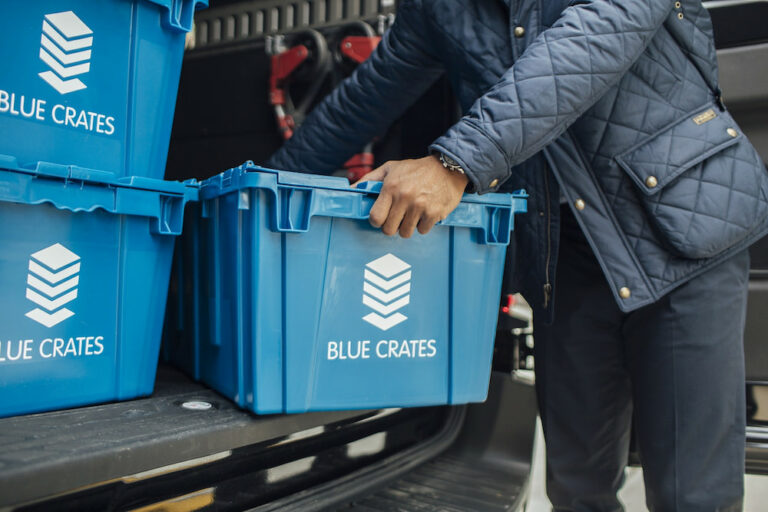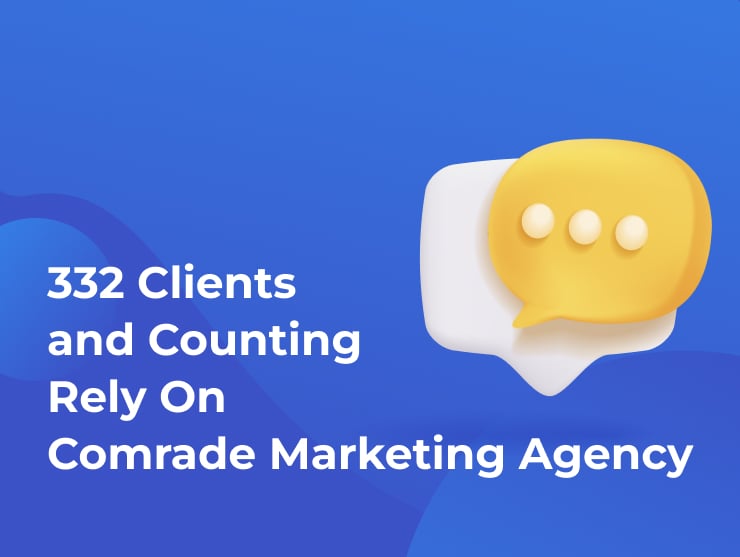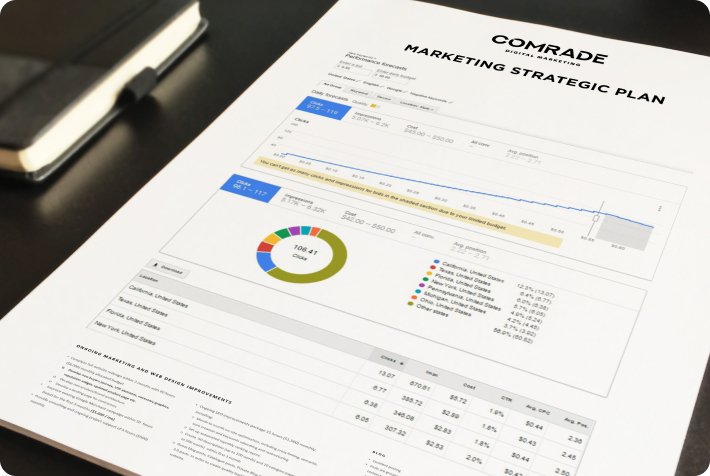
How to Use Your Instagram Account to Grow Your Ecommerce Business
Seeking ways to expand your eCommerce business? If your answer is yes, consider the potential of Instagram marketing for eCommerce. Boasting over 1 billion monthly active users, Instagram stands as a formidable platform, capable of connecting you with a substantial audience of prospective customers. Furthermore, the statistics reveal that after discovering a product on Instagram, a significant 46% of customers proceed to shop either offline or online, underlining the impact of Instagram eCommerce marketing strategies.
But if you’re new to Instagram for eCommerce, you might be wondering how to get started. In this article, we’ll give you some tips on how to use your Instagram account to grow your eCommerce business. With a little effort, you can start generating traffic and sales from this popular platform.
What Is Instagram Ecommerce?
Instagram eCommerce marketing has emerged as a fresh avenue for online shopping, enabling businesses to sell products directly through their Instagram accounts. This innovative form of eCommerce marketing has gained significant traction in recent times, largely owing to its convenience and widespread accessibility. With Instagram eCommerce marketing, businesses can efficiently establish an online store within their Instagram profile, enabling seamless shopping experiences for customers without having to exit the app.
Customers can purchase items directly through their feed without ever needing to leave the Instagram platform. This makes the buying process easier and faster for customers, increasing the chances of sales. It also allows businesses to better target potential customers with their ads and promotions. Instagram eCommerce is a great way for businesses to reach a larger audience and up their sales.
Is Instagram Good for Ecommerce?
Instagram has over 500 million active users. 80% of them follow an Instagram business account, and over 200 million users visit more than one business profile daily.
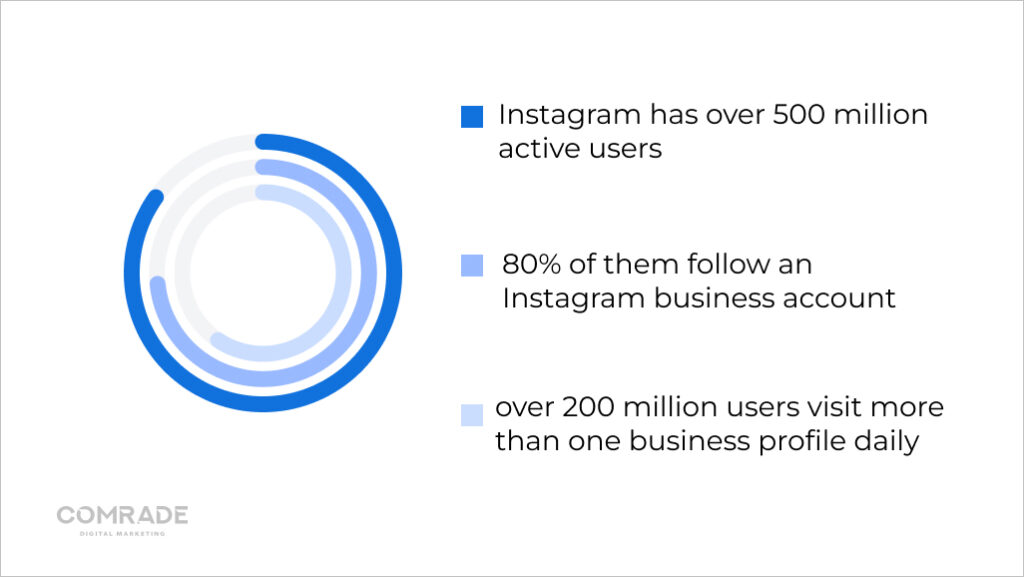
If major brands are taking advantage of Instagram’s Shop functionality, then there’s no reason why you shouldn’t leverage it to reach a wider audience.
Instagram shipping offers your Instagram followers an immersive storefront where they can explore your products.
In 2020, Instagram launched a range of features specifically designed to improve the purchasing process, which includes the ability to:
- Create customizable business pages with online shopping features;
- Add shopping tags with brand and price details to encourage shopping;
- Complete the shopping process without leaving the app;
- Sell products directly from influencers’ posts; and
- Produce live product presentations to convert new followers in real-time.
Instagram is a revenue-generating resource for new and established eCommerce stores. 44% of people use Instagram shops to make weekly purchases. It’s about time you captured your market share, too!
In order to give you an idea of just how effective Instagram is as a platform for your eCommerce brand, we’ve put together seven facts. Check them out:
- 70% of individuals said they discovered new products on Instagram, indicating that the site might be beneficial to businesses in terms of paid promotion and marketing.
- 75% of shopping mavens and 70% of shopping enthusiasts turn to Instagram monthly, indicating that many people use the platform to research products before making a purchase decision.
- It is estimated that 90% of users follow at least one business page on Instagram.
- 11% of social media users in the US use Instagram for shopping. This number may be higher in other countries where shopping on Instagram is more popular.
- Every day, 200 million Instagram users check out at least one company profile. This indicates that a significant portion of the population uses Instagram to learn about new products and services.
- Every month, at least one retail post is liked by 130 million Instagram users.
- On Instagram, 87% of users said that influencers motivated them to make a purchase. This percentage has likely grown in recent years as businesses have increasingly used social media channels, like Instagram, to advertise their products.
How to Set Up an Instagram Shop
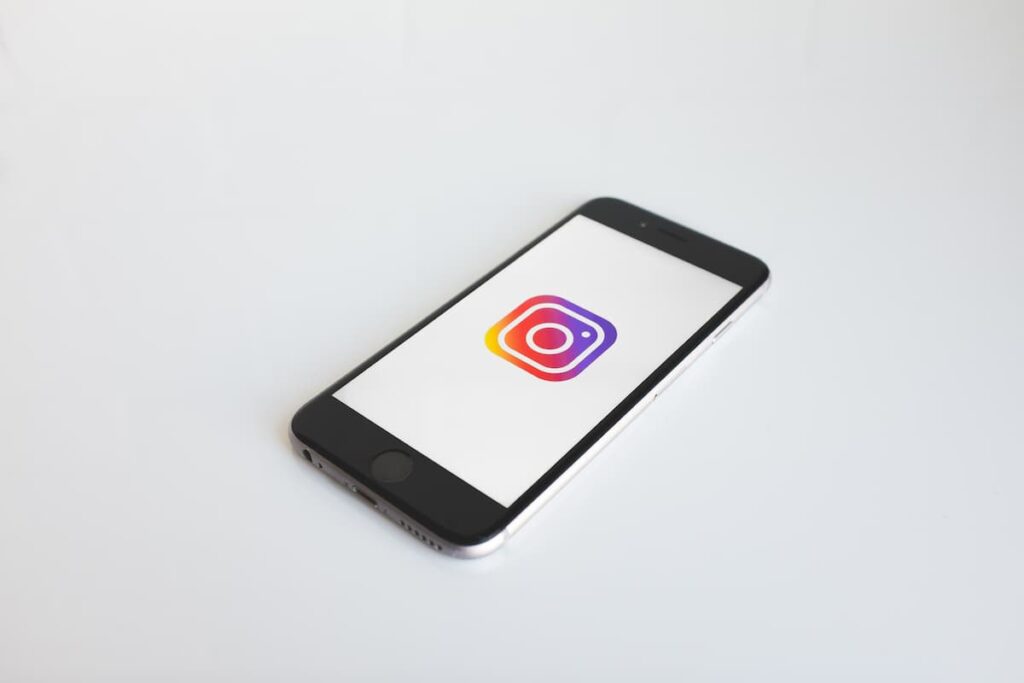
1. Meet the Eligibility Requirements
First things first, an Instagram Shop can only be used to sell physical products. And only businesses that comply with Instagram’s eCommerce policies qualify.
You have to be located in a country with access to the Instagram Shop feature and have the latest version of the app. You also have to have an Instagram business account, which provides you with access to Instagram ads and insights.
Lastly, you must own a Business Facebook account and Facebook page that’s linked to your Instagram account.
2. Add Your Product Catalog to Your Facebook Shop
Once your Instagram and Facebook business accounts are connected, you need to create a Facebook shop and sync your product catalog to it.
Facebook shopping catalog can synch up to your Instagram business profile through one of two techniques:
- Facebook’s Catalog Manager: You’ll find this within Facebook Business Manager.
- eCommerce Platform Partner: You can integrate it through certified eCommerce platforms like Shopify or BigCommerce.
3. Submit Your Account for Review
After connecting your Facebook shopping catalog, submit your account for review by:
- Going to your Instagram business profile and tapping on the menu icon;
- Selecting “settings”;
- Signing up for “shopping”; and
- Following the steps to submit your account for review.
- You can visit “Shopping” in your “settings” to check on your review status.
Note: Account reviews take a few days, sometimes longer. Occasionally, businesses have to provide additional information to prove they own their website domain. If this happens to you, just complete the domain verification process as instructed.
4. Turn on Shopping
To turn on shopping features once your account is verified, do the following:
- Go to Instagram “settings” and tap “business” and then “shopping”;
- Select the “product catalog” that you wish to connect your account to; then
- Finally, tap “done.”
Your Instagram Shop will now appear on your Instagram profile page.
Beginners Guide to Instagram Ecommerce
Instagram Guides are a significantly underrated asset within the spectrum of Instagram marketing for eCommerce, often overlooked despite their potential. These guides can be likened to compact blogs, blending elements of image carousels and blog posts. They offer a versatile platform for curating diverse content like gift guides, product highlights, content roundups, and even travel recommendations, making them a powerful tool for using Instagram for eCommerce purposes.
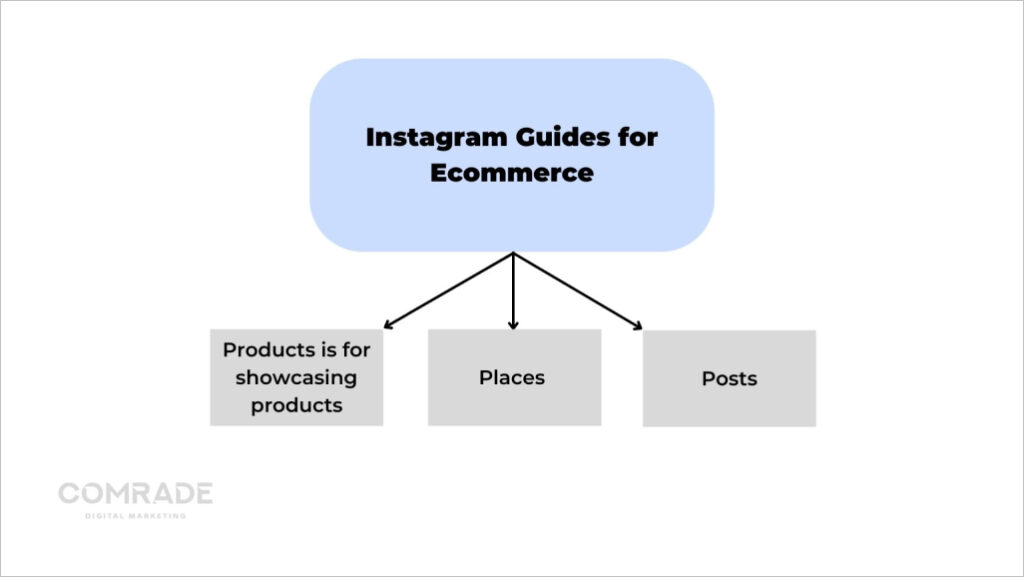
For example, Luxury fashion label Prada utilizes guides to advertise new season lookbooks.
Each Instagram guide includes a cover image, a title, an introduction, and optional descriptions for entries.
There are three types of guides—products, places, and posts.
- Products is for showcasing products from your Instagram store. You can create tutorials, listicles, etc. For example, Top Father’s Day Gift Ideas.
- Places is for sharing travel or location-related content. For instance, you could share a road trip itinerary of the best hotels in x location. Travel and tourism content works well with this type of guide. For example, The Best Museums in New York.
- Posts is for commentary, articles, or any actionable tips you want to share with people interested in your brand. For example, The Six Best Stretches After Running.
Instagram product guides are excellent for influencer marketing. They can promote your products by sharing your guides on their stories, as well as feature items on their in-feed posts.
Overall, guides are best for content marketing (not direct sales) and can also be used to drive traffic back to a specific business page on your eCommerce site.
Even though Instagram has become one of the most powerful e-commerce platforms in recent years, success on Instagram requires more than just posting beautiful photos. To truly take advantage of the platform’s eCommerce potential, businesses need to follow certain best practices.
Let’s outline some of the key Instagram eCommerce best practices that all businesses should follow in order to grow their store.
How to Use Instagram to Grow Your Ecommerce Store
Brands like Warby Parker, GymShark, and Tiffany & Co. have used Instagram to fuel their eCommerce success and influence their followers.
Here’s how you can leverage your Instagram business account to achieve greater sales.
Instagram Link Stickers
70% of users who see appealing items in Instagram Stories make purchases. Instagram lets brands place external links to their stories with link stickers. These replaced “swipe up” links in 2021.
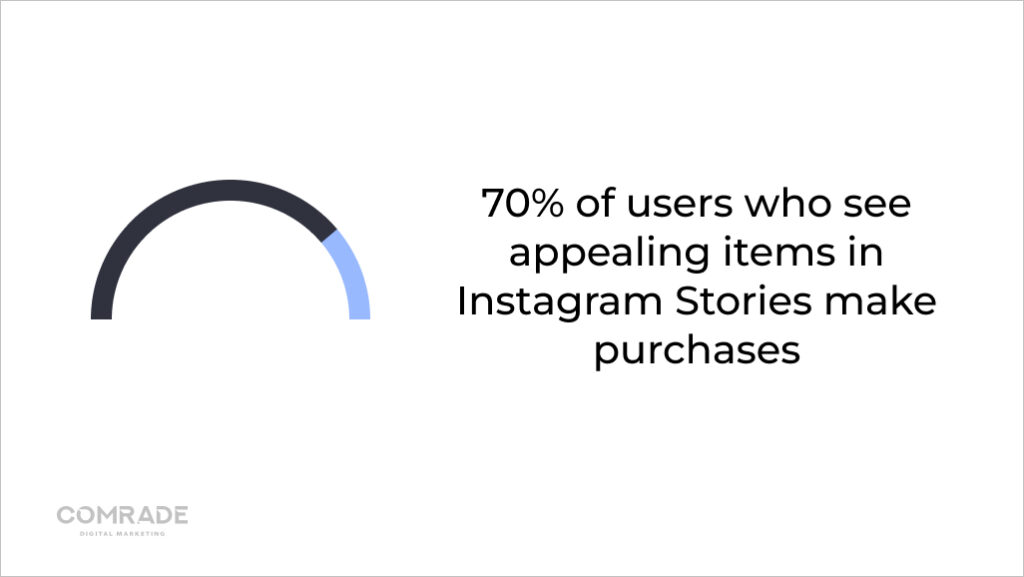
Link stickers make it easy to drive traffic to external content and products on Instagram. The best news is you can track link taps with Instagram analytics.
Stickers allow viewers to actively engage with your Stories with replies and reactions and offer more creative control over how your story looks, compared to the previous “swipe up” feature.
Post Consistently
Similar to other social media platforms, Instagram operates based on algorithms. Developing a consistent publishing routine is vital for expanding your reach and enhancing the visibility of your posts on Instagram, especially for augmenting the organic reach of your Instagram eCommerce marketing endeavors.
While there isn’t a rigid posting frequency rule, a suggestion would be to aim for 3-7 posts per week. According to a recent article featuring Instagram’s CEO Adam Mosseri on the social media management software app Hootsuite, building a robust following on Instagram entails sharing two feed posts per week and two Stories per day, particularly within the context of Instagram marketing for eCommerce.
Create Client Testimonials
Prior to making a purchase, a substantial 95% of customers engage with online reviews, which underscores their significance. Instagram marketing for eCommerce can capitalize on this trend by effectively utilizing Instagram stories to share customer reviews. Moreover, you can establish a continuous testimonial showcase on your Instagram page.
In the realm of eCommerce Instagram marketing, utilizing features like Stories, highlights, and regular posts offers popular avenues for sharing reviews. Requesting permission to repost a review or story not only engages your following effectively but also serves as an impactful method for encouraging others to contribute their own reviews.
Don’t just repost a review screenshot. Create attractive graphics and layouts to showcase the review and the product. Some Instagram eCommerce accounts create Story highlights for potential customers to view. Customers love reading social proof, and keeping all your reviews in one place helps a lot.
Measure Instagram Ecommerce Marketing ROI
When it comes to eCommerce Instagram marketing, the concept of ROI extends beyond its traditional monetary connotation, encompassing both tangible and intangible outcomes. While conventional metrics like social influence and brand awareness hold intrinsic value, there’s also a qualitative dimension— the emotional sentiments fostered among dedicated followers of your company.
Measuring these intangible Instagram metrics for eCommerce can be complicated due to their multifaceted nature, requiring a clear set of Key Performance Indicators (KPIs). For instance, you could establish a goal to elevate your brand’s engagement rate by 20%, serving as a tangible ROI. This entails assessing aspects like comments, shares, and saves to gauge the achievement of this target.
Then, of course, there’s a simple formula to help calculate monetary ROI:
(Value achieved – costs) / costs x 100 = Instagram ROI
If the number you reach exceeds 0, then your investment is paying off. If it’s lower than 0, it means your costs outweigh the “profits” generated.
The most important Instagram metrics to measure include: reach, sales, engagement rate, Stories views, Reels engagement, traffic, saves, and shares.
As you can see, it is specific and technical, which is why it may be worthwhile to hire a digital agency to help your Instagram business account reach its full potential!
Delivering Business Results: Our Digital Marketing Case Studies
Instagram and Influencer Marketing
Influencer engagement shines as an exceptional avenue for Instagram marketing eCommerce, primarily due to its unparalleled reach and remarkable engagement rates. Despite its comparatively smaller user base when compared to Facebook, Instagram stands out for its highly interactive environment. As demonstrated by Influencer Marketing Hub’s analysis of 1,000,000 influencer profiles across social media platforms, Instagram boasts the highest interaction rate, solidifying its significance in using Instagram for eCommerce.
You can partner with micro-influencers and superstar celebrities. We’d be lying if we said it didn’t come down to budget because it mostly does. Reputable influencers will likely be represented by an agency that will take a cut of their marketing fee.
There are also niche influencers or fledging content creators who want to get into the influencer market and would possibly work for a trade exchange or lower rates.
Things to Consider When Finding an Influencer
Naturally, there are a couple of points to think about:
- Niche: The influencer should fit your target audience niche. For instance, if you’re an organic product seller, you’ll likely choose an influencer who has a healthy lifestyle, like a sportsperson or businessperson.
- Reach: How important the size of the influencer’s followers is, depends on your campaign goal. For example, a celebrity is great for raising brand awareness, but a micro-influencer might be better for driving sales.
- Voice: Think about who your influencer is and how they fit into your brand. Do you need someone who has a sense of humor or is more serious? How old should they be, and how do you want your audience to perceive their affiliation with your brand?
Determine a Collaboration Structure
Like all marketing plans, you need a strategy and KPIs. We recommend signing some type of agreement to formalize how you’ll work with influencers. This protects everyone and keeps them happy.
- Timeframe: To avoid having to follow up a dozen times, set a timeline from the beginning that outlines expectations.
- Content production: Have a clear idea of the kind of content you want them to produce. The last thing you need is for them to create something different from what you had in mind. Some businesses have very strict guidelines about the format and product placement, while others are laxer. We suggest you communicate this clearly beforehand and put it in writing!
- Content usage rights: Always request full usage rights if you want to use an influencer’s content in ads, testimonials, etc. You may have to negotiate this with them.
- Compensation: Some influencers charge a flat rate per post or content piece, while others are paid based on performance. Again, you’ll have to figure out the fine print. However, you should always be prepared to make a monetary payment.
Decide on Campaign Type
Your campaign goals will usually determine the types of posts you want influencers to create:
- Sponsored posts: With these, you pay influencers to create content on behalf of your brand. They’re expected to tag posts that are “sponsored” and comply with Instagram disclosure agreements.
- Competitions: Here you send free products to influencers, and they run giveaway contests.
- Reviews: This content is self-explanatory, but you basically pay influencers to review your products.
- Branded content: This entails sharing posts through your Instagram eCommerce profile, but you feature influencers in the content. So, essentially, you have greater creative control.
How to Engage Instagram Users: Paid vs. Organic Posts
Apart from the monetary aspect, the most notable distinction between paid and organic Instagram content lies in the fact that organic posts are displayed to individuals who already follow you, while paid content expands your reach to a more extensive and targeted audience, especially in the context of eCommerce Instagram marketing.
It’s also possible to “boost” organic posts. This is an effective strategy when shoppable posts perform really well.
Neither is superior to the other, as they serve distinct purposes. Organic social media contributes to the cultivation of your eCommerce brand and fosters engagement with your current followers, whereas paid content draws in new followers who may not have otherwise discovered you.
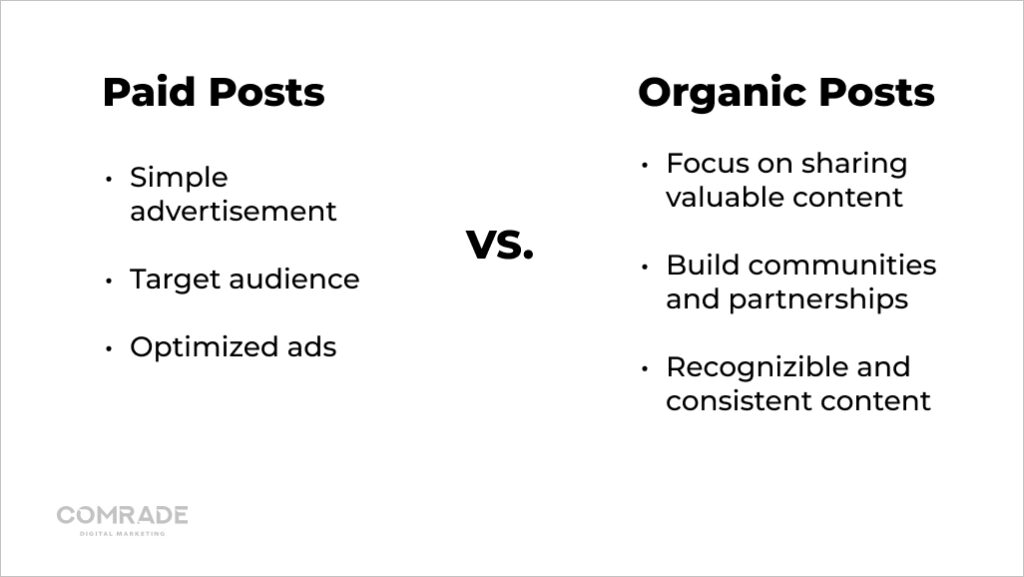
Tips for Paid Content
Navigating organic algorithms can be demanding, underscoring the significance of investing in Instagram ads. Insights from Instagram reveal that 50% of individuals exhibit heightened interest in a brand after encountering ads for it on the platform.
Below are some branded content tips:
- Keep your advertisements simple. Showcase the product and have a strong call to action. Remember, potential customers are quickly scrolling through feeds, so you have milliseconds to grab their attention.
- Target the right audience at the right time. You can narrow down audience segments according to location, interests, and demographics. Restaurants, for instance, will time their ads to hit feeds just before lunch or dinner.
- Optimize your ads. From clear CTAs to succinct messaging, and A/B testing. Always make sure your ads achieve what they’re set out to do. Moreover, choose the right ones! There are Story ads, feed ads, carousel ads, and collection ads, all designed to showcase your products to the right audience for Instagram marketing eCommerce.
Supercharge your Instagram eCommerce with Comrade Digital Marketing Agency. Capture attention, target the right audience, and optimize your ads! Schedule a free consultation.
Tips for Organic Content
While consistency is key, there are still a few things you need to know about how to use Instagram for eCommerce to generate sales from organic posts.
- Don’t hard sell! Organic shopping posts should focus on sharing valuable content. Aim to get your audience to know you, trust you, and feel like they resonate with your brand. User-generated content is also a great source of authentic material for your brand.
- Build communities and partnerships. Occasionally, it’s possible to collaborate with other brands. For example, let’s say you’re a thrift store, and you do a photoshoot where the models use products from a small beauty brand. This is a win-win for both companies!
- Keep your visuals consistent. Actually, before you post any visual or video content, make sure you’ve decided on your brand’s visual identity. You want your branding on your Instagram account to be instantly recognizable and consistent across all social media channels.
Use Video Marketing for Instagram eCommerce Success
It’s crazy, but video represents 80% of all internet traffic! As a visual medium, it engages users better and evokes stronger emotions compared to text.
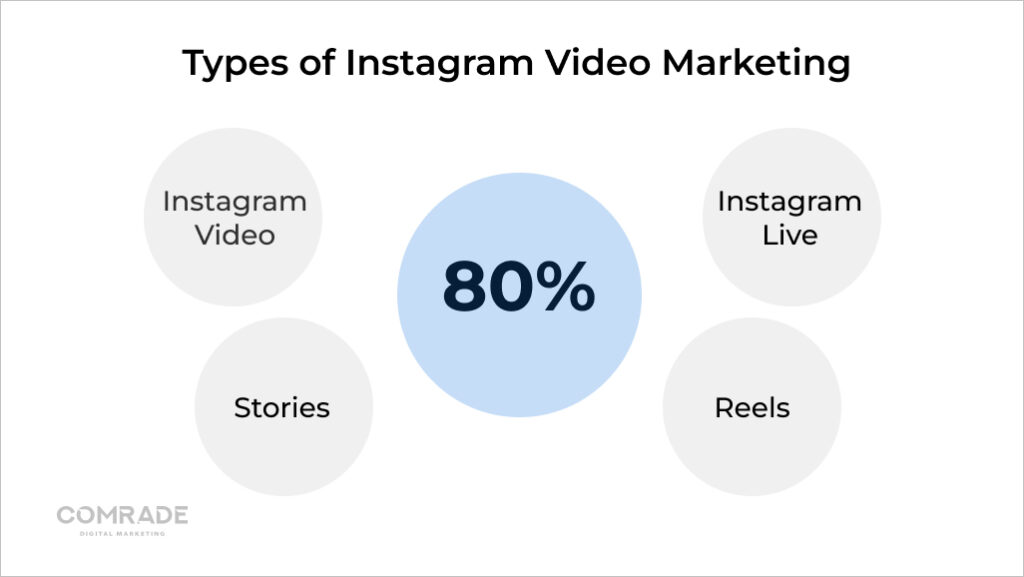
We’re not saying ditch blogging, but just be aware that Instagram is first and foremost a visual platform, and Instagram videos get customers excited about your brand (Blogging is just as effective elsewhere.)
Instagram Video
In October 2021, Instagram ditched IGTV and rebranded it “Instagram Video.” Its in-stream video ads shifted to Reels.
Instagram video posts are added the same way images are posted. Either you record using the platform’s built-in camera, or can upload a video from your photo library.
Its features include trimming tools, filters, and the ability to tag people and locations. Users can preview videos for 60 seconds, except for ads, which preview for 15 seconds.
Videos can be up to 60 minutes long, providing creative freedom unavailable on competing platforms, except YouTube.
Once posted, Instagram users can engage with likes and comments, and share videos in Stories and direct messages.
Instagram feed videos display in user feeds as well as on your Instagram account profile page. They are best for promoting a product or service. H&M’s Pride Month commercial is a good example.
Stories
500 million people use Instagram Stories every day. On average, each user spends at least 30 minutes on the Instagram app. Stories are a key part of knowing how to use Instagram for eCommerce effectively.
Stories let eCommerce businesses share photos and videos (their own and user-generated) throughout the day with stickers, doodles, and music. Together, these photos form an animated slideshow that stays up for 24 hours. Afterward, you can save it as a highlight on your profile.
With branded Instagram Stories, retailers can promote sales and discounts and inform customers about topics related to the products they offer. It’s also possible to conduct polls. While these may be entertaining, they’re also valuable target market research.
Instagram Live
This feature lets online stores broadcast videos to fans in real time. The difference between Facebook’s Livestreams and Instagram’s is that Instagram’s are temporary and disappear when the broadcast is over. In some ways, this offers increased exclusivity.
While Instagram Live may not be the most effective channel to increase revenue, it does provide the possibility of direct contact with customers. Events, product reviews, launch announcements, and Q&As are all suitable for this channel.
Viewers can also interact directly with the Livestream broadcaster via comments and questions, which is really great for brand engagement!
How Do I Use Instagram Reels for Ecommerce?
As Instagram’s alternative to TikTok, Reels is Meta’s attempt to reach Gen Z. This latest integration allows users to film or upload creative video clips up to 90 seconds long. Reels can be found under their own tab on business account profiles and shared on Instagram Feeds Stories or Explore Tabs. This video feature comes with built-in editing tools and an extensive library of tracks, filters, captions, interactive backgrounds, stickers, and more to share creative content in an engaging highly trendy format.
Reels are less formal and more enjoyable. For instance, Starbucks’ reels are a fun combination of internet jokes and promotional content. These short videos are simple to create and an excellent method to reach a wider target audience, especially when businesses adhere to trending hashtags or contests to develop related content. It is possible to create something truly original and go viral with these creative videos.
What Are the Differences Between Reels and Stories?
Unlike Stories, Reels don’t disappear after 24 hours. Once you post a reel, it’s available until you delete it. Reels are also six times longer than Stories that have a limited 15-second cap. Because Reels have more advanced editing tools that allow you to stitch several clips into a single video and create seamless transitions, it’s helpful to consider them as tools for content creation. Stories, on the other hand, are more useful for sharing real-time events and short snippets of information that don’t warrant 90 seconds worth of video.
Reels for Ecommerce — The Most Popular Content Types
In the ever-evolving landscape of digital marketing, Reels have emerged as one of the most popular and engaging content types for ecommerce businesses. These short, snappy videos offer a dynamic platform for showcasing products, highlighting brand identity, and engaging with your audience. Here are some content ideas to harness the power of Reels for your ecommerce venture:
- Product Demos: Create short Reels demonstrating how to use your products or showcasing their unique features.
- Behind-the-Scenes: Give a glimpse behind the scenes of your ecommerce operations, showcasing the process of creating or packaging products.
- Customer Testimonials: Share short clips of satisfied customers providing testimonials and reviews.
- How-to Guides: Create Reels that guide viewers on how to solve common problems using your products.
- User-Generated Content: Encourage customers to share their experiences with your products in Reels.
- Seasonal Promotions: Use Reels to promote special offers, discounts, and seasonal sales.
- Storytelling: Share the story behind your brand or products to connect with your audience emotionally.
- Tutorials: Create Reels that teach viewers something related to your niche, positioning your brand as an expert.
- FAQs: Answer frequently asked questions about your products or company in a creative Reel format.
- Challenges and Trends: Participate in popular challenges or trends within your industry to stay relevant and engaging.
Leveraging Reels for ecommerce not only helps you connect with your audience in a fun and engaging way but also keeps your brand at the forefront of the digital marketing landscape.
What Every Ecommerce Business Should Know About the Instagram Algorithm
Instagram’s algorithms are in a state of perpetual flux. An algorithm comprises a defined array of rules and signals, orchestrating the platform’s content ranking. This complex analysis encompasses all content shared via the Instagram app, meticulously weighing pertinent hashtags, metadata, and engagement metrics.
Interest, relationship, and timeliness are the three main factors that affect where and how your post is shown to Instagram users.
Our trusted partner Shopify has written extensively on 2022 algorithm updates. To put it succinctly: engagement is key!
The platform considers how likely users are to comment, like, save, spend time, or tap on a profile.
When planning your content (more so organic Instagram feed content), ask yourself:
- Are these Instagram posts likely to be commented on or liked?
- Will users save these posts and come back to them?
- Do the posts include a strong CTA, that will prompt sales or conversions?
There isn’t really a cookie-cutter “hack” to win at Instagram, besides just investing in good marketing practices like using appropriate product tags and trending hashtags when applicable.
If you create content with the above questions in mind, you’re on the right track to working with the Instagram algorithm.

Conclusion
The majority of Instagram users are on the social media platform at least once a day. eCommerce businesses have much to gain from Instagram shopping, most notably, improving their bottom lines!
Here at Comrade Digital Marketing Agency, we specialize in helping eCommerce companies maximize their reach by implementing proven digital marketing strategies.
If you require assistance from an expert with your Instagram shopping and marketing strategy, get in touch with our team. We offer free complimentary consultations to determine the best to create leads on Instagram.
Instagram FAQs
Is Instagram good for Ecommerce?
Instagram is an excellent channel to drive more sales. Its built-in eCommerce capabilities make it easy to sell your products online and reach your target audience. Brands that use Instagram experience a 1,416% increase in traffic and a 20% boost in revenue.
How do I set up Instagram Shopping
For eCommerce marketers, developing a successful Instagram eCommerce strategy is crucial. One of the key Instagram marketing strategies for boosting eCommerce sales involves utilizing Instagram Shopping. This can be initiated by linking your Facebook business page and Instagram business profile. To set it up, log into your Instagram profile, open the menu in the upper-right-hand corner, then navigate to "Settings." From there, choose "Business" and tap "Set Up Instagram Shopping Link" to initiate the process of enhancing your Instagram marketing strategy.
Which Ecommerce platform is best for Instagram?
Most popular eCommerce platforms like Wix, Squarespace, Shopify, BigCommerce, Magento, WooCommerce, and WordPress have integrated functionality or plugins that connect with Instagram and allow you to sell there. You can also visit our WooCommerce development services page to learn more.
Can I sell products directly on Instagram?
Utilizing an Instagram post for eCommerce purposes enables you to facilitate sales through posts, Stories, live streams, and paid ads, particularly when you possess a Shoppable Instagram page. While a website isn't an absolute necessity, we highly recommend harnessing the synergy between your website and an Instagram business profile to effectively drive sales.
Where do you operate?
Comrade originates in Chicago, but we worked all around the United States. We can help your business grow and increase revenue whenever you are. We have offices across most major cities in the US. For example, we can offer digital marketing services in Austin or Cincinnati. You can even find our internet marketing experts in Denver! If you want to know more about our Miami digital marketing agency or find out how exactly we can help you, contact us via the phone or email.





